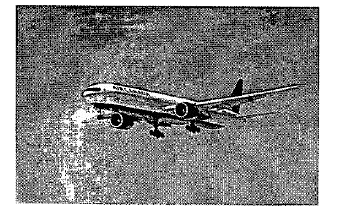Two dice (each bearing numbers 1 to 6) are rolled together. Find the probability that the sum of the numbers on the upper-most faces of two dice is :
(ii) 7, 8 or 9.
To find the probability that the sum of the numbers on the upper-most faces of two rolled dice is 7, 8, or 9, we can follow these steps:
Step 1: Determine the Total Outcomes
When rolling two dice, each die has 6 faces. Therefore, the total number of outcomes when two dice are rolled is:
Total Outcomes=6×6=36
Step 2: Identify Favorable Outcomes for Each Sum
Next, we need to find the combinations of the two dice that result in sums of 7, 8, or 9.
- Sum = 7:
- (1, 6)
- (2, 5)
- (3, 4)
- (4, 3)
- (5, 2)
- (6, 1)
Total combinations for sum = 7: 6
- Sum = 8:
- (2, 6)
- (3, 5)
- (4, 4)
- (5, 3)
- (6, 2)
Total combinations for sum = 8: 5
- Sum = 9:
- (3, 6)
- (4, 5)
- (5, 4)
- (6, 3)
Total combinations for sum = 9: 4
Step 3: Calculate Total Favorable Outcomes
Now, we add the favorable outcomes for sums of 7, 8, and 9:
Total Favorable Outcomes=6+5+4=15
Step 4: Calculate the Probability
The probability P of an event is given by the ratio of the number of favorable outcomes to the total number of outcomes:
P(sum is 7, 8, or 9)=Total Favorable OutcomesTotal Outcomes=1536
Step 5: Simplify the Probability
To simplify 1536:
1536=512(dividing both numerator and denominator by 3)
Final Answer
The probability that the sum of the numbers on the upper-most faces of two dice is 7, 8, or 9 is:
512
---
When rolling two dice, each die has 6 faces. Therefore, the total number of outcomes when two dice are rolled is:
Total Outcomes=6×6=36
Next, we need to find the combinations of the two dice that result in sums of 7, 8, or 9.
- (1, 6)
- (2, 5)
- (3, 4)
- (4, 3)
- (5, 2)
- (6, 1)
Total combinations for sum = 7: 6
- (2, 6)
- (3, 5)
- (4, 4)
- (5, 3)
- (6, 2)
Total combinations for sum = 8: 5
- (3, 6)
- (4, 5)
- (5, 4)
- (6, 3)
Total combinations for sum = 9: 4
Now, we add the favorable outcomes for sums of 7, 8, and 9:
Total Favorable Outcomes=6+5+4=15
The probability P of an event is given by the ratio of the number of favorable outcomes to the total number of outcomes:
P(sum is 7, 8, or 9)=Total Favorable OutcomesTotal Outcomes=1536
To simplify 1536:
1536=512(dividing both numerator and denominator by 3)
The probability that the sum of the numbers on the upper-most faces of two dice is 7, 8, or 9 is:
512
Topper's Solved these Questions
Similar Questions
Nine cards (identical in all respects) are numbered 2 to 10. A card is selected from them at random. Find the probability that the card selected will be :
an even number.
View SolutionA dealer sells goods/services, worth Rs 30,000 to some other dealer in the same town at a discount of 25%. If the rate of GST is 12%, find the amount of bill.
View SolutionAn aeroplane travelled a distance of 400km at an average speed of x km/hr. On the return journey, the speed was increased by 40km/hr.

The expression for times taken for the onward journey is
View Solutionदो पासे एक साथ फेके जाते है। दोनों पासो की संख्याओं का योगफल 7 होने की प्रायिकता है:
View SolutionTwo dice are rolled simultaneously. Find the probability that
(i) the sum of the numbers on their upper faces is at the most 5.
(ii) the sum of the numbers on their upper faces is at least 6.
View Solutionदो पाँसों को एकसाथ फेंका जाता है। प्रायिकता ज्ञात कीजिए कि (i ) दोनों पाँसों पर समान संख्या प्राप्त होती है, (ii ) दोनों पाँसों पर प्राप्त संख्याओं का योग 8 है, (iii ) दोनों पाँसों पर प्राप्त संख्याओं का योग 9 से अधिक है।
View Solutionদুটি ঝোঁকশূন্য পাশা একসঙ্গে গড়িয়ে দেওয়া হয়। পাশা দুটিতে প্রাপ্ত অঙ্ক দুটির সমষ্টি 7 হওয়ার অনুকূলে সুযোগ নির্ণয় করো।
View SolutionTwo different dice are tossed together. Find the probability that (i) number on each dice is even (ii) sum of numbers appearing on the two dice is 5.
View SolutionA dice is rolled two times or two dice are rolled together. Find the probability of getting:
an even number on each dice.
View SolutionA dice is rolled two times or two dice are rolled together. Find the probability of getting:
a prime number on each dice.
View SolutionA dice is rolled two times or two dice are rolled together. Find the probability of getting:
(iii) a composite number on each dice.
View SolutionTwo dice (each bearing numbers 1 to 6) are rolled together. Find the probability that the sum of the numbers on the upper-most faces of two dice is :
(i) 4 or 5.
View SolutionTwo dice (each bearing numbers 1 to 6) are rolled together. Find the probability that the sum of the numbers on the upper-most faces of two dice is :
(iii) between 5 and 8.
View SolutionTwo dice (each bearing numbers 1 to 6) are rolled together. Find the probability that the sum of the numbers on the upper-most faces of two dice is :
(iv) more than 10.
View SolutionTwo dice (each bearing numbers 1 to 6) are rolled together. Find the probability that the sum of the numbers on the upper-most faces of two dice is :
(v) less than 6.
View Solution